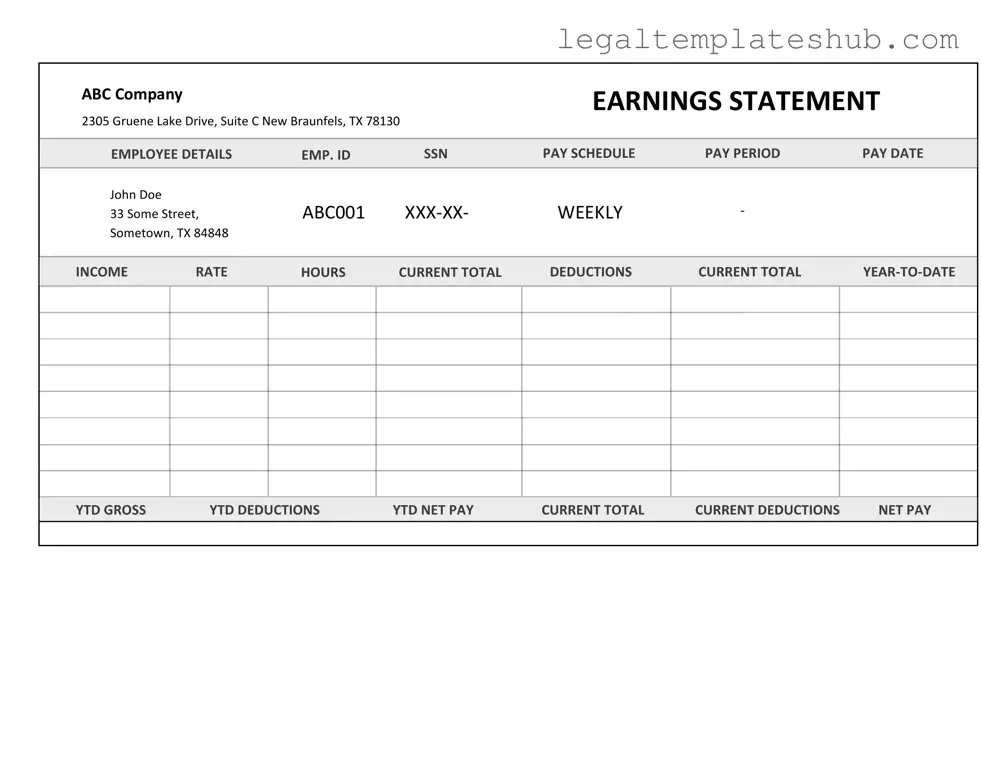Blank Independent Contractor Pay Stub PDF Form
The Independent Contractor Pay Stub form serves as a detailed record of payments made to independent contractors for their services. This document outlines the earnings, deductions, and other relevant information, ensuring transparency in financial transactions. To streamline your payment process, consider filling out the form by clicking the button below.
Access Editor
